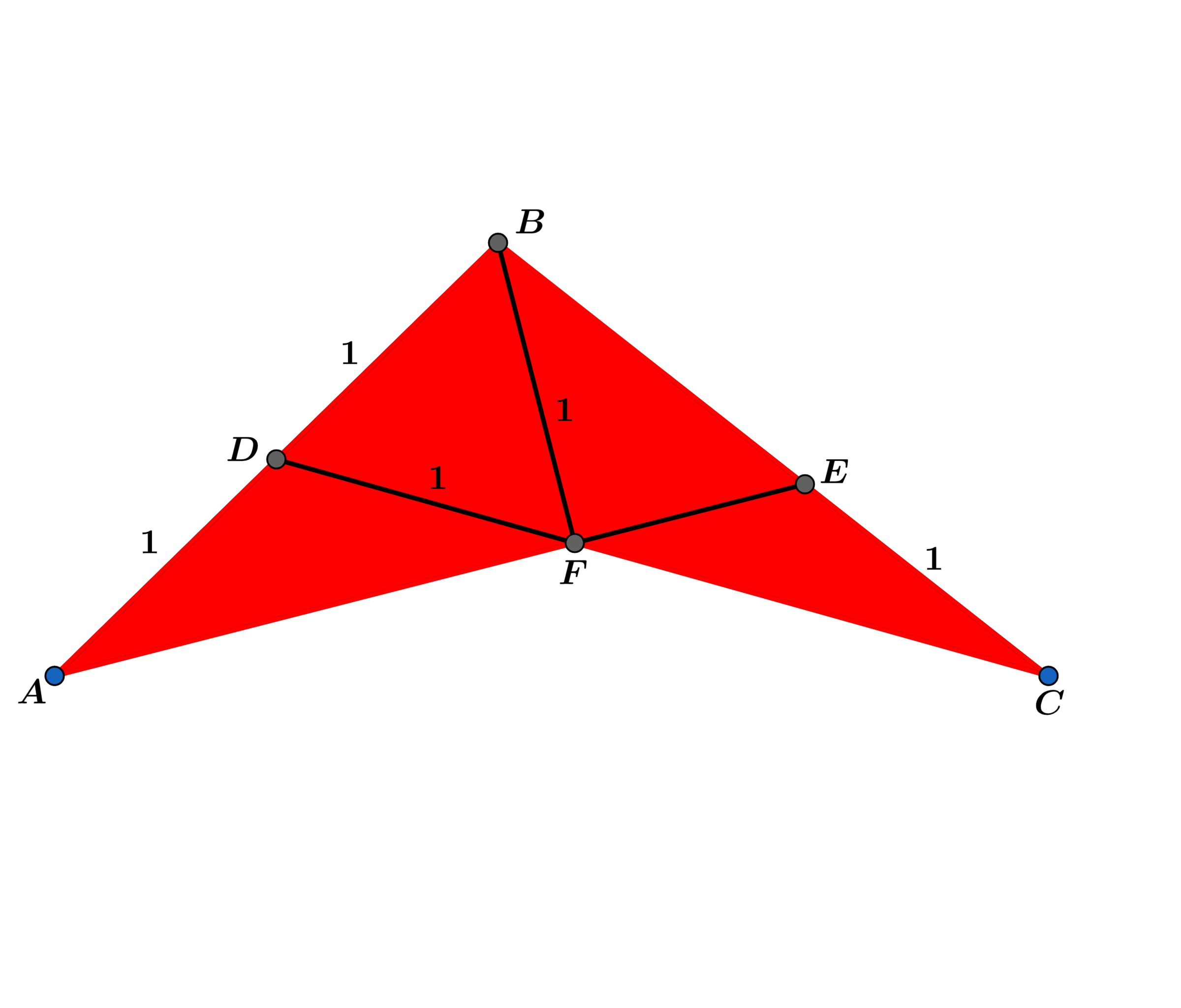Area Of A Quadrilateral!

In the diagram above .
Find the area of the shaded quadrilateral above.
The answer is 1.55339022.
This section requires Javascript.
You are seeing this because something didn't load right. We suggest you, (a) try
refreshing the page, (b) enabling javascript if it is disabled on your browser and,
finally, (c)
loading the
non-javascript version of this page
. We're sorry about the hassle.
I filled in the angles in the diagram above using properties of an equilateral triangle, isosceles triangle and the measure of a straight angle.
Let m ∠ F B C = θ , m ∠ F C B = λ , F E = a and B E = x .
Using △ D B C ⟹ λ = 6 0 − θ
Using the law of sines on △ F B E ⟹ x = sin ( θ ) a
Using the law of sines on △ F E C ⟹ 2 = sin ( 6 0 − θ ) a ⟹ a = 2 sin ( 6 0 − θ ) ⟹
x = sin ( θ ) 2 ( sin ( 6 0 ∘ ) cos ( θ ) − cos ( 6 0 ∘ ) sin ( θ ) ) = 3 cot ( θ ) − 1 .
Using △ F B E ⟹ cot ( θ ) = a 1 and x 2 = a 2 + 1 ⟹ a = x 2 − 1 ⟹
cot ( θ ) = x 2 − 1 1 ⟹ x = x 2 − 1 3 − 1 ⟹ ( x + 1 ) x 2 − 1 = 3
⟹ ( x 2 + 2 x + 1 ) ( x 2 − 1 ) = 3 ⟹ x 4 + 2 x 3 − 2 x − 4 = 0
⟹ x 3 ( x + 2 ) − 2 ( x + 2 ) = 0 ⟹ ( x 3 − 2 ) ( x + 2 ) = 0
x > 0 ⟹ x = − 2 ⟹ x = 2 3 1 ⟹ a = 2 3 2 − 1 .
Let F C = l
m ∠ B E F = 9 0 − θ ⟹ m ∠ F E C = 9 0 + θ and sin ( θ ) = x a ⟹
Using the law of cosines on △ F E C ⟹ l 2 = a 2 + 1 − 2 a cos ( 9 0 + θ ) =
a 2 + 1 + 2 a sin ( θ ) = a 2 + 1 + x 2 a 2 = 2 3 2 − 1 + 1 + ( 2 3 2 ) ( 2 3 2 − 1 ) =
2 3 2 ( 1 + 2 3 2 − 1 ) = 2 3 4 ⟹ l = 2 3 2
⟹ A △ F E C = 2 1 2 3 2 ( a sin ( 3 0 ∘ ) = 2 1 2 3 2 2 3 2 − 1 ( 2 1 ) = 2 3 4 2 3 2 − 1
A △ F B E = 2 1 ( a ) ( 1 ) = 2 2 3 2 − 1
A △ F D B = 2 1 ( 1 ) ( 2 3 ) = 4 3
Let A F = m
Using the law of cosines on △ A D F ⟹
m 2 = 2 − 2 cos ( 1 2 0 ∘ ) = 2 + 2 ( 2 1 ) = 3 ⟹ m = 3 ⟹
A △ A D F = 2 1 3 ( sin ( 3 0 ∘ ) = 4 3
⟹ A = 2 3 4 2 3 2 − 1 + 2 2 3 2 − 1 + 2 3 ≈ 1 . 5 5 3 3 9 0 2 2